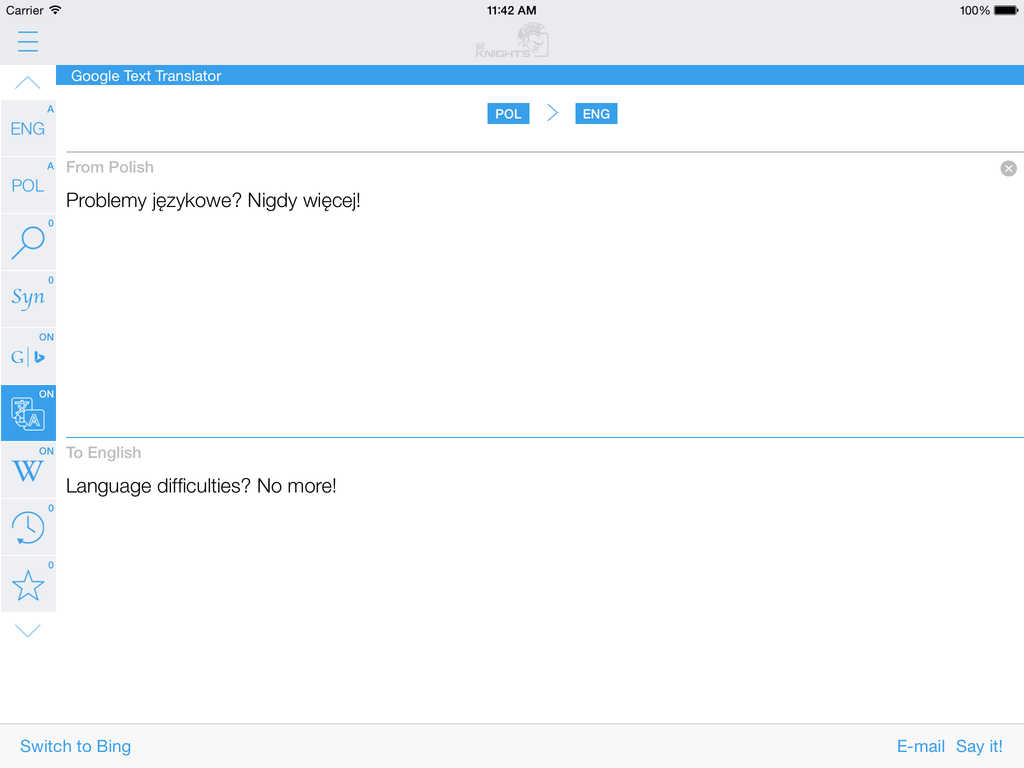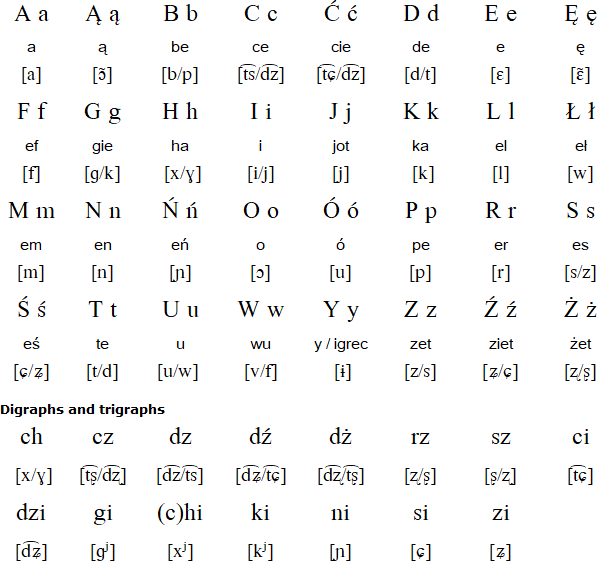

Īmong the major languages, it is most closely related to Slovak and Czech but differs in terms of pronunciation and general grammar. Contemporary Polish developed in the 1700s as the successor to the medieval Old Polish (10th–16th centuries) and Middle Polish (16th–18th centuries).

It is one of very few languages in the world possessing continuous penultimate stress (with only a few exceptions) and the only in its group having an abundance of palatal consonants. Polish is a synthetic and fusional language which has seven grammatical cases. The traditional set comprises 23 consonants and 9 written vowels, including two nasal vowels ( ę, ą) defined by a reversed diacritic hook called an ogonek. Those three letters are at times included in an extended 35-letter alphabet, although they are not used in native words. The traditional 32-letter Polish alphabet has nine additions ( ą, ć, ę, ł, ń, ó, ś, ź, ż) to the letters of the basic 26-letter Latin alphabet, while removing three (x, q, v). Polish is subdivided into regional dialects and maintains strict T–V distinction pronouns, honorifics, and various forms of formalities when addressing individuals. It ranks as the sixth most-spoken among languages of the European Union. There are over 50 million Polish speakers around the world. In addition to being the official language of Poland, it is also used by the Polish diaspora.

It is spoken primarily in Poland and serves as the native language of the Poles. Polish (Polish: język polski, ( listen), polszczyzna ( listen) or simply polski, ( listen)) is a West Slavic language of the Lechitic group written in the Latin script. For an introductory guide on IPA symbols, see Help:IPA. Without proper rendering support, you may see question marks, boxes, or other symbols instead of Unicode characters.
#Translate su from polish free#
Therefore, this free English language to Polish translation online tool will be beneficial for English-speaking people.This article contains IPA phonetic symbols. It helps to practice English to Polish translation with English keyboard. It can also be used as English Polish dictionary to get the quick result of English word meaning in Polish. It can directly convert the typed text into English script and, at the same time, translates it into the output language. This website gives an option to choose English input and the desired output. Therefore, translation becomes important for those people who are more comfortable to write in English and want to communicate their feeling to other language-speaking people. It has been recognized as an official language in different regions such as Australia, Canada, Fiji, India, Ireland, New Zealand, Nigeria, Rwanda, Singapore, South Africa, United Kingdom, and United States and as a minority language in Bahrain, Greenland, Malaysia, and Sri Lanka. According to Wikipedia, English is spoken by 360–400 million people as native language and 750 million as a secondary language around the world. Importance of language converter for a English speaker.


 0 kommentar(er)
0 kommentar(er)
